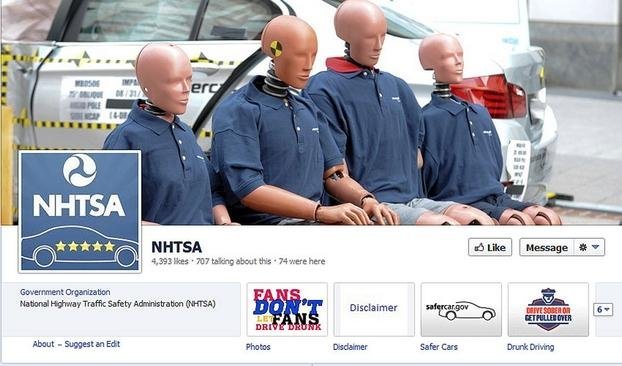Social Media Emerge as Tool to Find Vehicle Defects, Complaints

And federal regulators already are doing it, too.
National Highway Traffic and Safety Administration investigators use various forms of social media to do their jobs, an agency spokeswoman acknowledged last week.
In addition to direct consumer complaints and information sent directly from auto and equipment makers, NHTSA investigators routinely search auto Web sites, fan sites, bulletin boards, trade publications and popular magazines for information that might lead to an investigation, the NHTSA spokeswoman said.
They also search social media sites for specific issues if they believe available data are inadequate for assessing a problem.
Online forums
Online forums also offer new sources of defect information and surveillance, researchers at Virginia Tech's Pamplin College of Business said in a study released late last year.
Assistant Professor Alan Abrahams and Professor Weiguo Fan conducted the large-scale case study of online discussion forums. They did not study Facebook or Twitter.
In the report, the researchers took a snapshot of thousands of discussion forum threads for Honda Motor Co. Toyota Motor Corp. and Chevrolet in June 2010. Automotive experts analyzed and categorized the posts.
"Social media analytics provides low-cost, real-time insight into defect existence and severity, by vehicle component category," Abrahams said.
He said the voice of the customer is well-known to be one of the best sources of design intelligence, and social media analytics give automakers aggregate access to customer voices.
James Edge, a digital marketing manager for Grappone Automotive Group, said the fourth-generation New Hampshire-based dealership group loves Facebook because it opens the lines of communication with customers.
"There were times we could have potentially lost a customer, but we collaborated with them on Facebook," Edge said.
Early indicator
The primary benefit from the Virginia Tech research is product design, Abrahams said. Social media postings are potential early indicators of issues before they appear in NHTSA complaints or other media outlets.
"Using social media analysis, one maker's car models can be benchmarked against other brands," Abrahams said.
Automotive social media expert Kathi Kruse, founder of Kruse Control Inc., said manufacturers would benefit greatly from researching conversations and developing a closer tie to consumers on social media.
"Take a platform like Facebook," Kruse wrote in an e-mail. "It's the most frequently checked Web site on the Internet: 852 million daily logins, 25 percent of users login five times a day, 3.2 billion likes and comments everyday."
For example, the Facebook page for Grappone Automotive Group has more than 28,300 likes.
Automotive marketing expert Jim Wangers, who once helped fuel the popularity of the Pontiac GTO, said that for now, social media are far more valuable as marketing tools than as surveillance tools for defects. While they allow industry leaders to communicate quickly with vehicle owners, social media have also produced an unusual amount of "personal gripes" and complaints about insignificant defects like squeaks and rattles, Wangers said.
"It is unlikely that direct contact thru social media will become much more than a 'sounding board' of after-the-fact complaints," he wrote in an e-mail.
But Edge said whining and complaining on Grappone's Facebook page are rare, with a negative comment coming only once every few weeks at the most.
It's usually a customer with a legitimate reason for being upset, Edge said. When there is a complaint, the auto group fixes it and replies to the customer on the social media site. Then customers leave messages of gratitude.
"It gives us a great opportunity to fix that and show it online," he said.
Abrahams expects that we will see more automotive social media research in the future.
Such research, he said, would mean more rapid identification and prioritization of defects and feature requests: faster time-to-market, better quality vehicles, higher vehicle sales and lower warranty servicing costs.
Mining for litigation
The researchers also have noticed more interest in their work from law firms.
It "could also mean higher litigation," Abrahams said, "as law firms more easily and rapidly discover vehicle defects from public social media sources."
Many brands already benefit from Internet social media technology, enhancing customer contact databases with social media profiles from Web sites such as Twitter, Facebook and LinkedIn. The information is used for target marketing and personalizing sales/support interactions, Abrahams said.
Chrysler employs Twitter teams to analyze and respond to whining tweets, according to an article in The Economist. Nissan does Web text analytics through text analysis software.
Fan and Abrahams would like to expand their research to include Facebook and Twitter in the future, and they're hoping vehicles manufacturers will fund a large-scale study.
Related News


